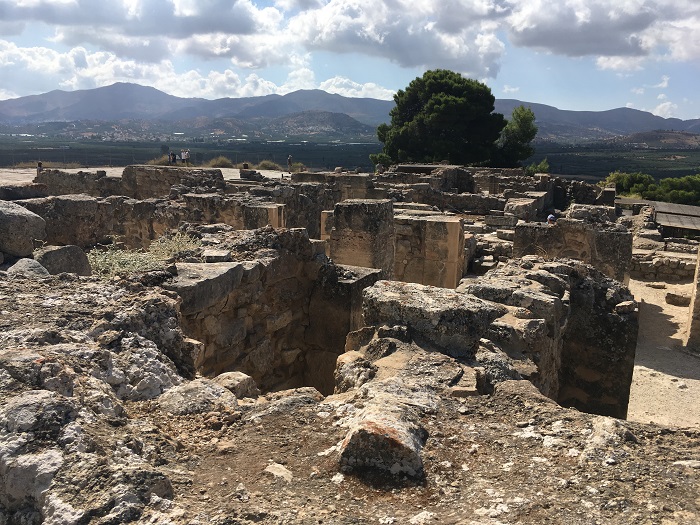
Thor and I trace the labyrinthine ruins of this Minoan palace-city where I camped years ago to listen to voices of the ancient past.
NOTE: Of course, Thor and I had to make another trip to Greece, as he’s fallen as much in love with the islands as I am. This time, in addition to other island-hopping, I wanted to return to Crete after 37 years. My first months-long trip was as a hippie backpacker, camping in the ruins and falling under the spell of the mysterious, vanished Minoan culture. This time, I got to introduce Thor to “glorious Kriti” and research more settings for my novel-in-progress, THE ARIADNE DISCONNECT. This new blog series started October 19, 2019, and will continue every Saturday.
Lawrence Durrell, in his wonderful pictorial memoir THE GREEK ISLANDS, writes of Phaistos (sometimes spelled Phaestos in English): “Atmosphere for atmosphere, I feel much more mystery and splendour about Phaestos than Knossos. I think most people would agree. The site is a honeyed one for summer breezes…. and through the verdant plain below a small river called Giophoros — ‘earthbringer’ — prettily potters.”
I’m not sure everyone would agree, but the two major Minoan sites are very different in their presentation today. The more famous Knossos (we’ll visit it in upcoming blog posts) was extensively and controversially reconstructed some decades ago by Sir Arthur Evans, to dramatic effect:

In contrast, the excavation of the similarly important site of Phaistos has proceeded much more conservatively, and a visit to the ruins requires more imagination to trace the tightly-packed footings and remaining chambers in order to capture a sense of the former inhabitants. There is certainly more serenity here to contemplate the past, far from the tourist hordes crowding popular Knossos. And, since I had camped among the ruins in my hippie traveler days before the site was fenced, I was eager to see if my memory of the peaceful valley remained true.
So Thor and pried ourselves away from the south coast and those rejuvenating swims, driving back up the steep gorge to wind through the rugged mountains.
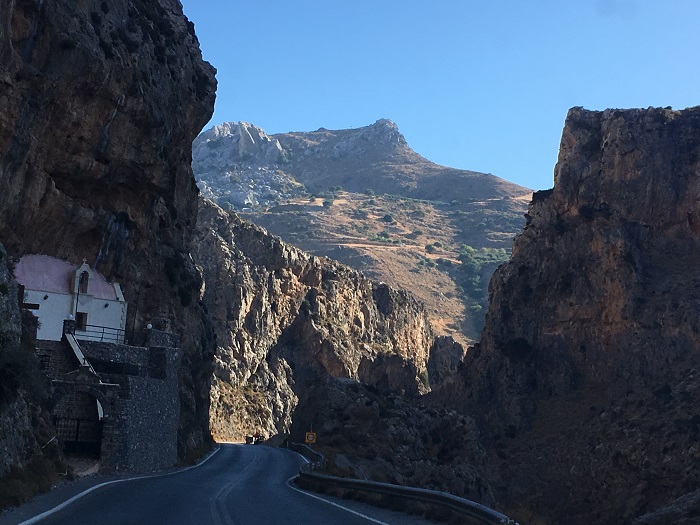
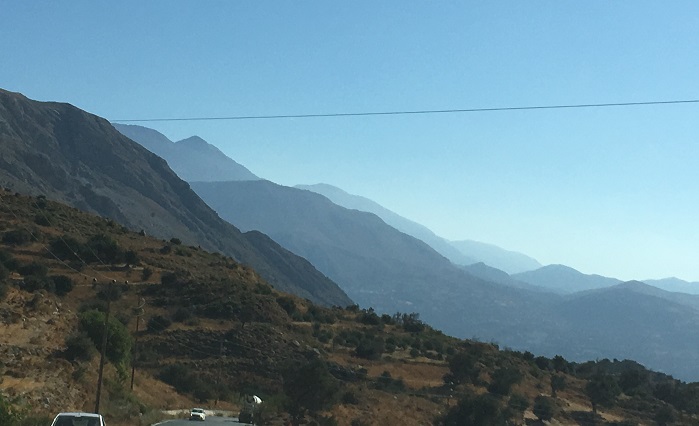
Traveling Crete’s roads involves many twists and turns, but as we aimed eastward, we emerged again above the south coast for a view of the last island between us and Africa:
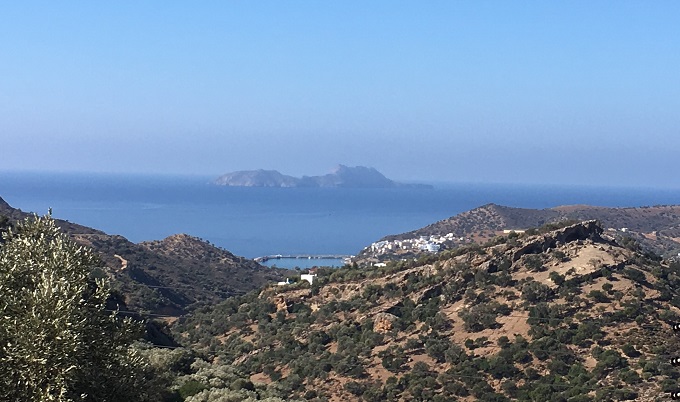
Heading east took us away from the rugged western mountains into more open terrain devoted to agriculture. Greenhouses covered an extensive area along our drive, though many of them appeared to be abandoned, perhaps due to the economic woes gripping Greece these days.
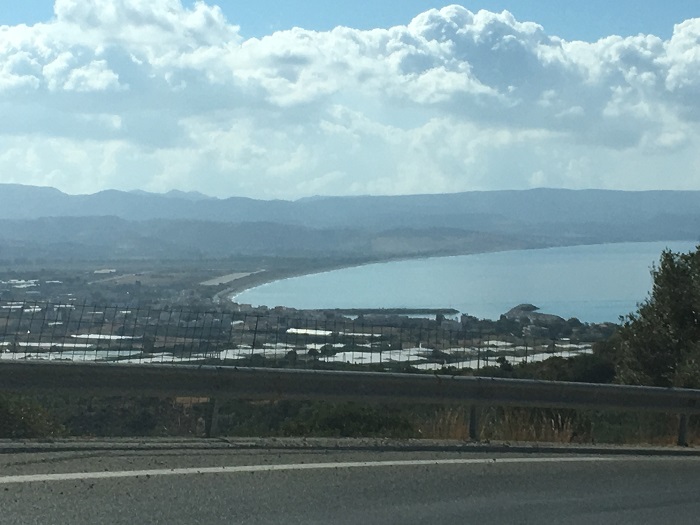
Leaving the dusty agricultural/industrial area behind, we were happy to climb once more into green hills and the lovely Mesara valley sheltering Phaistos.
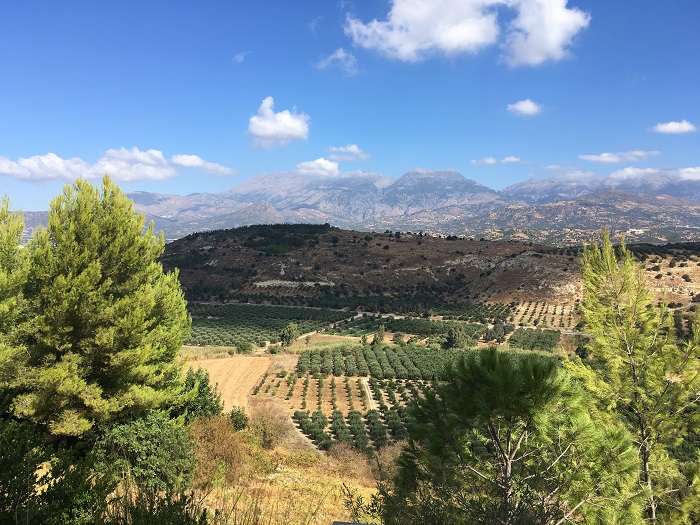
Breathing deeply of the warm, fresh breeze, I had to agree with Lawrence Durrell about this valley. His friend Henry Miller also wrote evocatively of the site, I believe in THE COLOSSUS OF MAROUSSI: “The rain has stopped, the clouds have broken; the vault of blue spreads out like a fan, the blue decomposing into that ultimate violet light which makes everything Greek seem holy, natural and familiar. In Greece one has the desire to bathe in the sky. You want to rid yourself of your clothes, take a running leap and vault into the blue. You want to float in the air like an angel or lie in the grass rigid and enjoy the cataleptic trance. Stone and sky, they marry here….” Exactly.
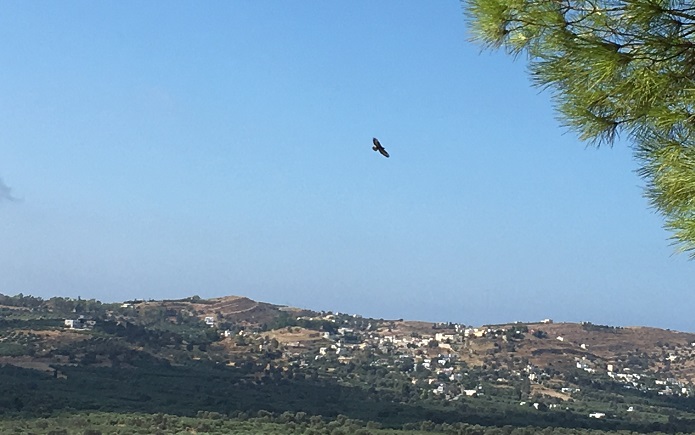
Approaching the site:

After admiring the views, we entered the Upper Court:
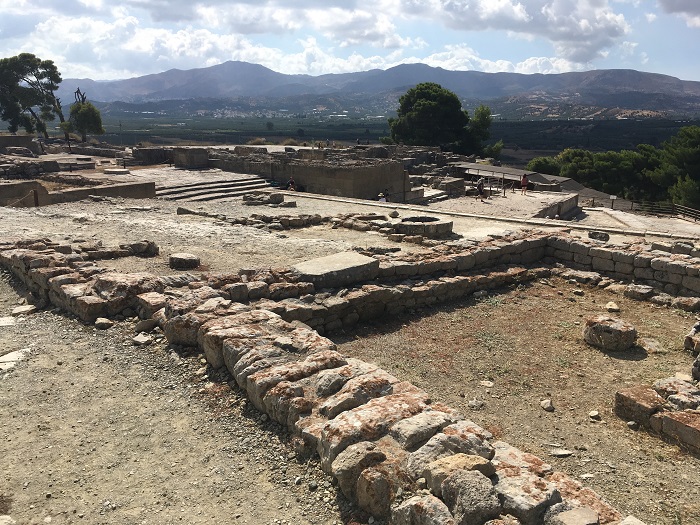
Phaistos has been inhabited since the late Neolithic Period (around 3600-3000 BC). From the 20th to 15th century BC, it was an important Minoan center like Knossos, with extensive finds in the surrounding area, including closeby Hagia Triagada. The first and largest palace was built here around 2000 BC, with terraces, large courtyards for bull-dancing and other ritual gatherings, and up to three stories of luxurious structures. It was destroyed in one of the region’s many earthquakes around 1700 BC. A second, more modest palace was destroyed by another earthquake around 1600. After that, Phaistos declined in importance, though continuing as an independent settlement after the Mycenaeans arrived from mainland Greece to take control of Crete. It was finally conquered in 170 BC by nearby Gortys, the new island capital during the Roman occupation.
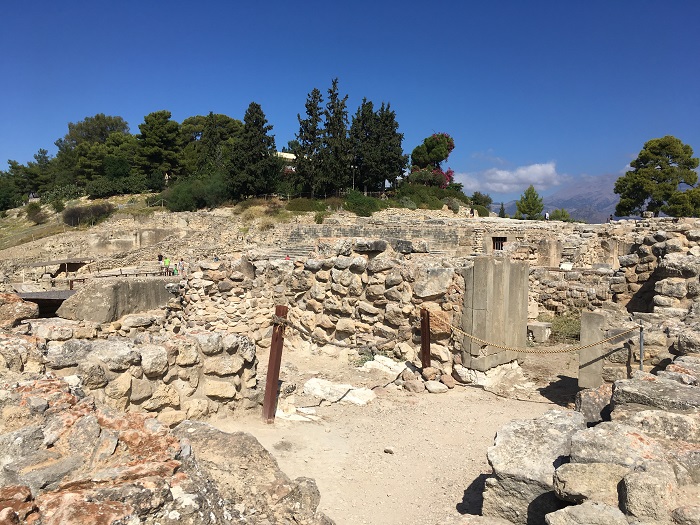
The expansive Central Court:
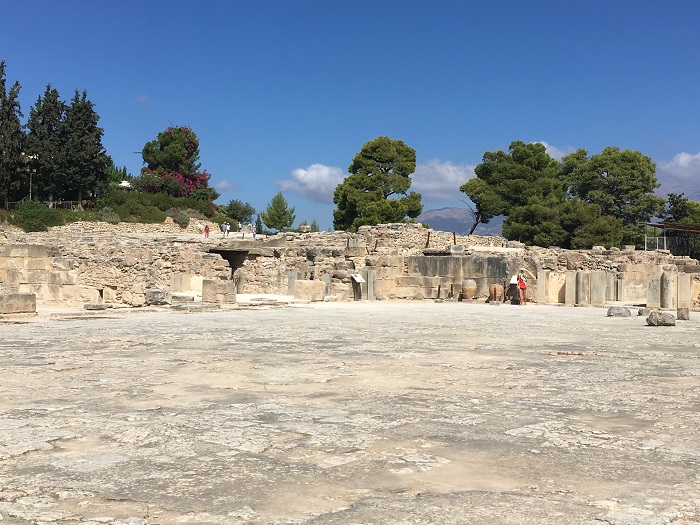
Among the mysteries here, no one is sure of the purpose of this stone block of unusual composition, about 4 or 5 feet long. Perhaps it had a ritual purpose.
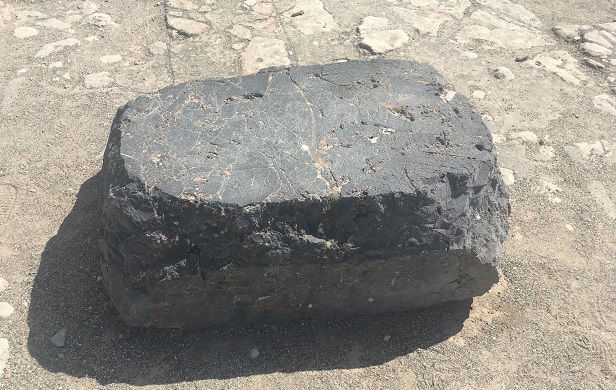
The biggest mystery is the Phaistos Disc found here and now residing in the Iraklion Museum:
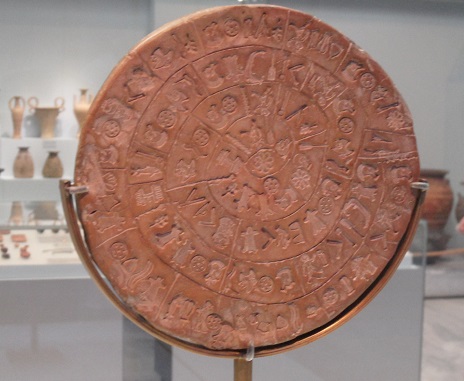
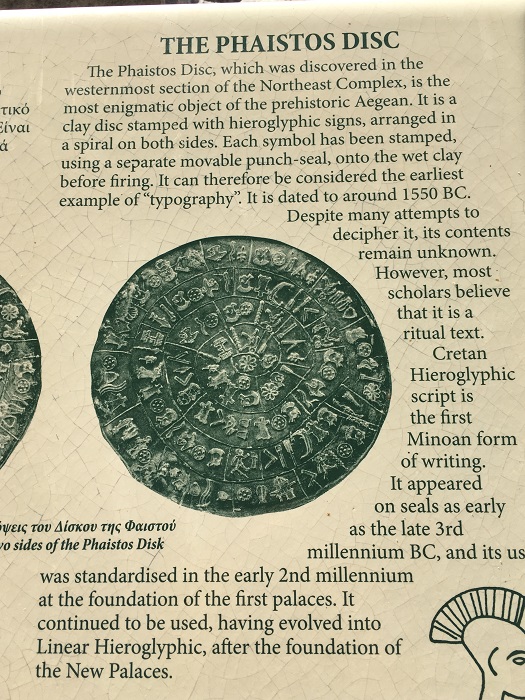
Moving along to the Propylaea steps:
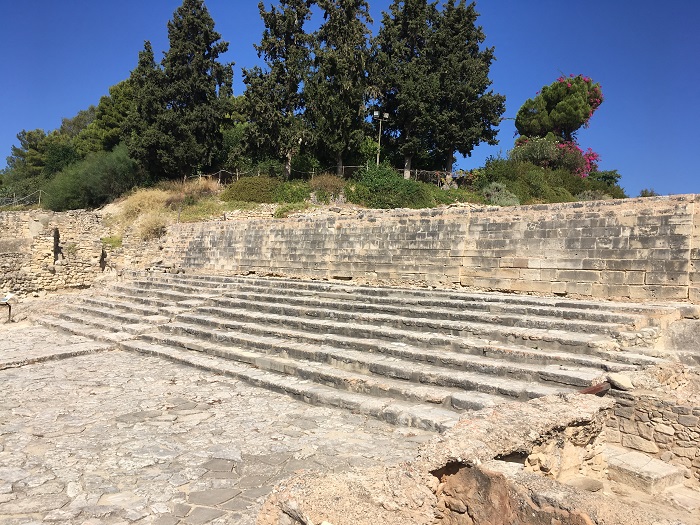
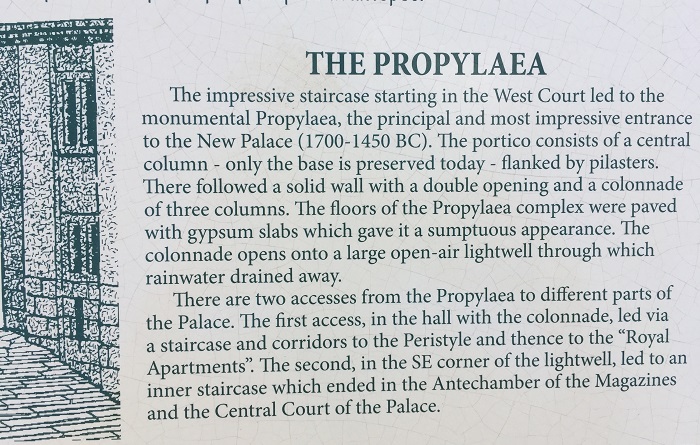
The “magazines” or storage areas:
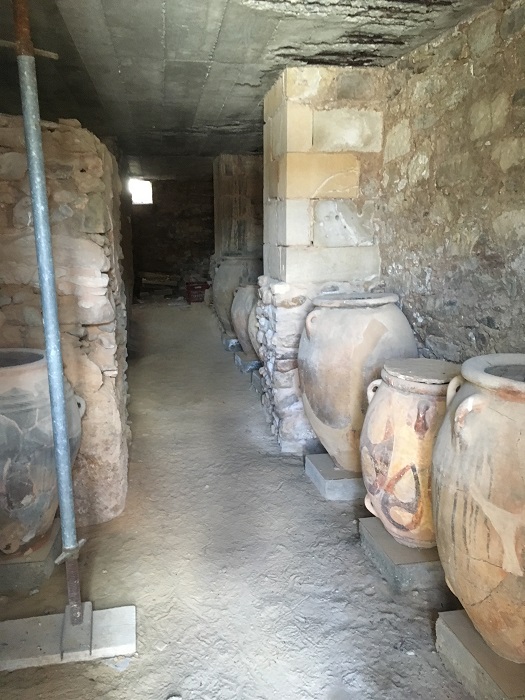
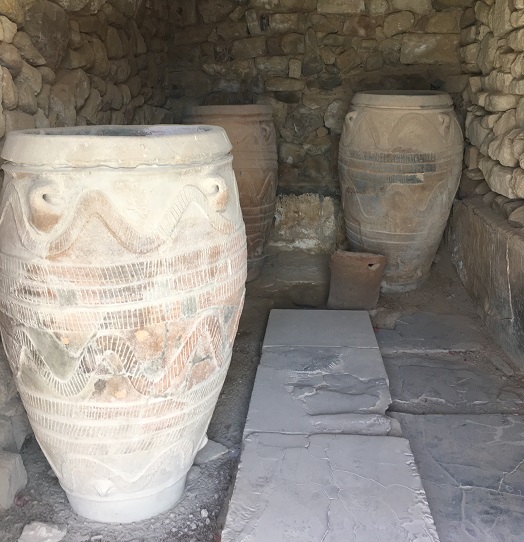
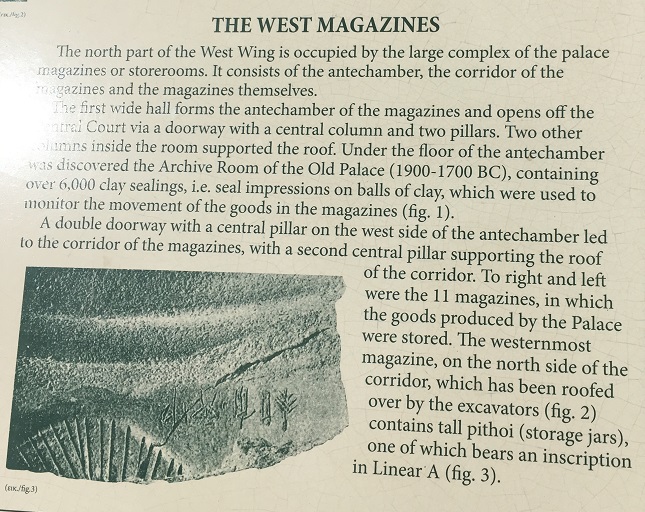
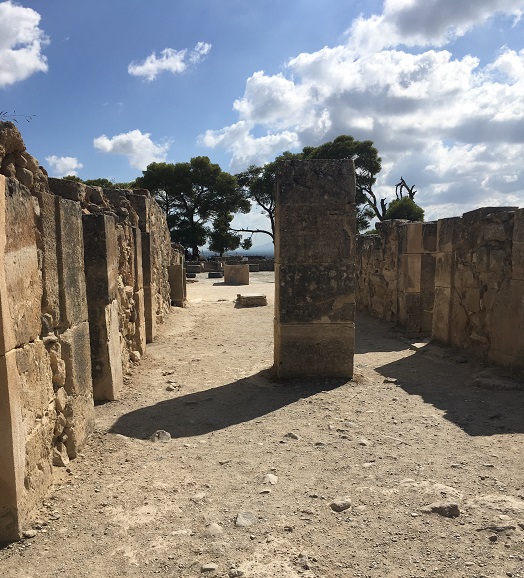
In this area we found what look like “metates” or grinding stones we’ve seen in Latin America:
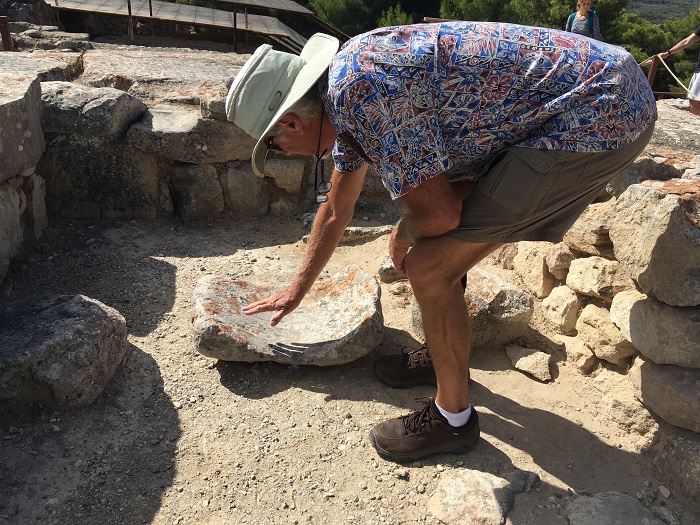
There were also several of these enigmatic, incised stones with different etched patterns, 2 or 3 feet long. We didn’t find any explanation, so feel free to offer information!

It was good to sit quietly contemplating the mysteries of the past, along with current resident lizard. We hoped the hawk circling overhead (photo above) didn’t spot this cutie.
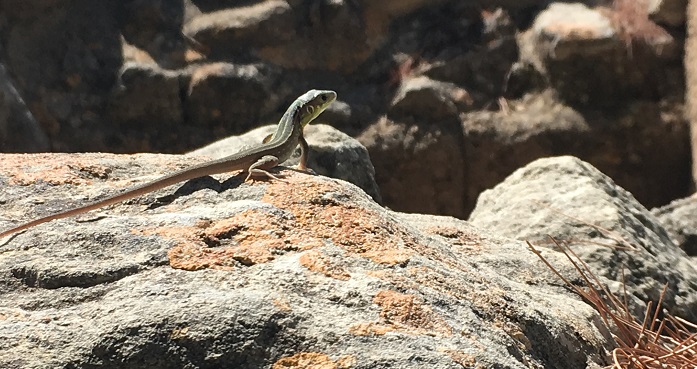
Next week, we’ll finish our exploration of Phaistos, including the royal apartments and some of the fabulous Kamares ware found here and in a sacred cave in the hills above the site.
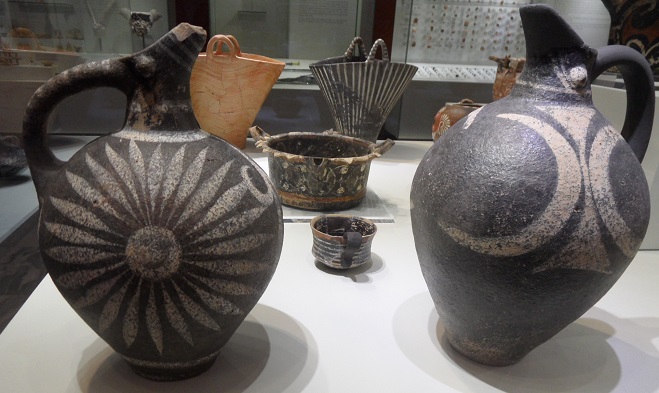
*****
You will find The Rambling Writer’s blog posts here every Saturday. Sara’s latest novel from Book View Cafe is available in print and ebook: The Ariadne Connection. It’s a near-future thriller set in the Greek islands. “Technology triggers a deadly new plague. Can a healer find the cure?” The novel has received the Chanticleer Global Thriller Grand Prize and the Cygnus Award for Speculative Fiction. Sara has recently returned from another research trip in Greece and is back at work on the sequel, The Ariadne Disconnect. Sign up for her quarterly email newsletter at www.sarastamey.com

1 thought on “The Rambling Writer Returns to Crete, part 8: Mysteries of Ancient Phaistos”